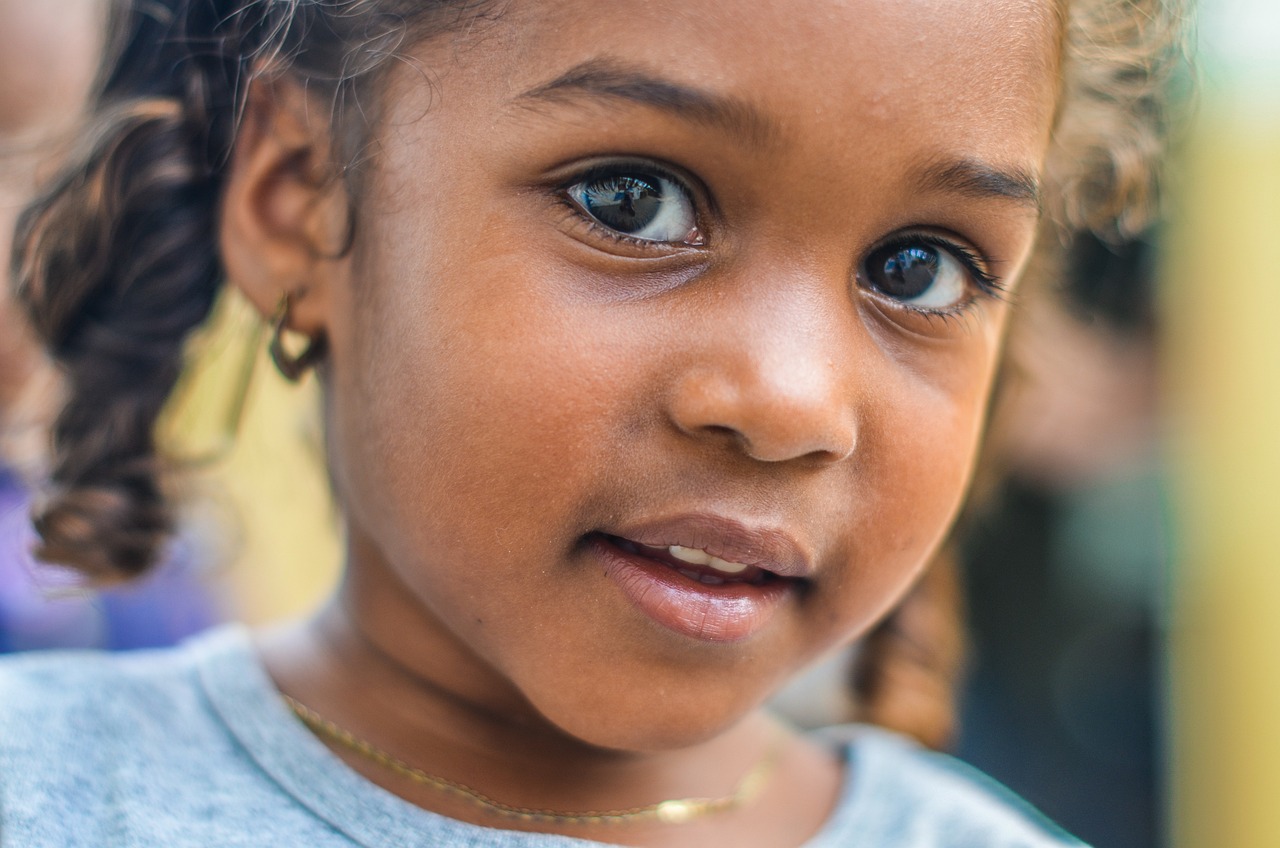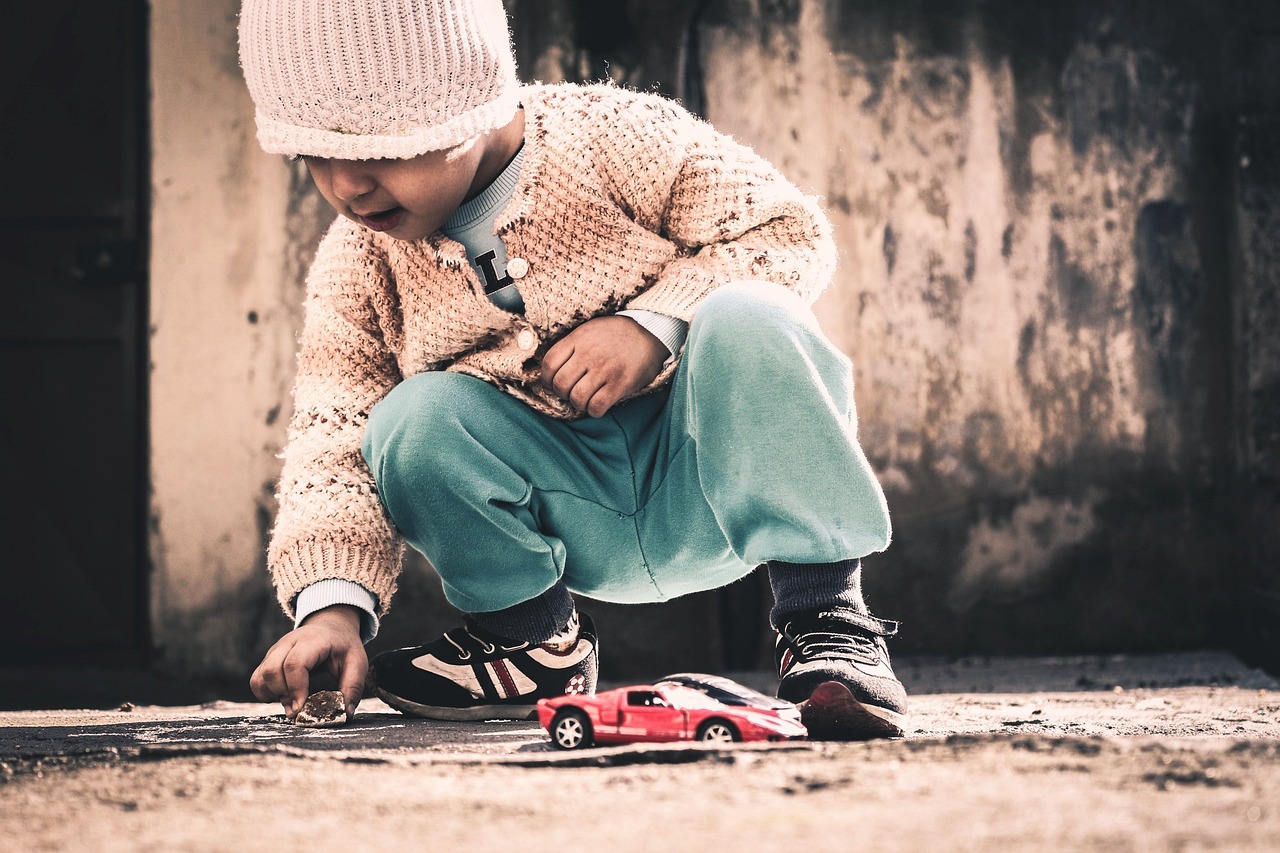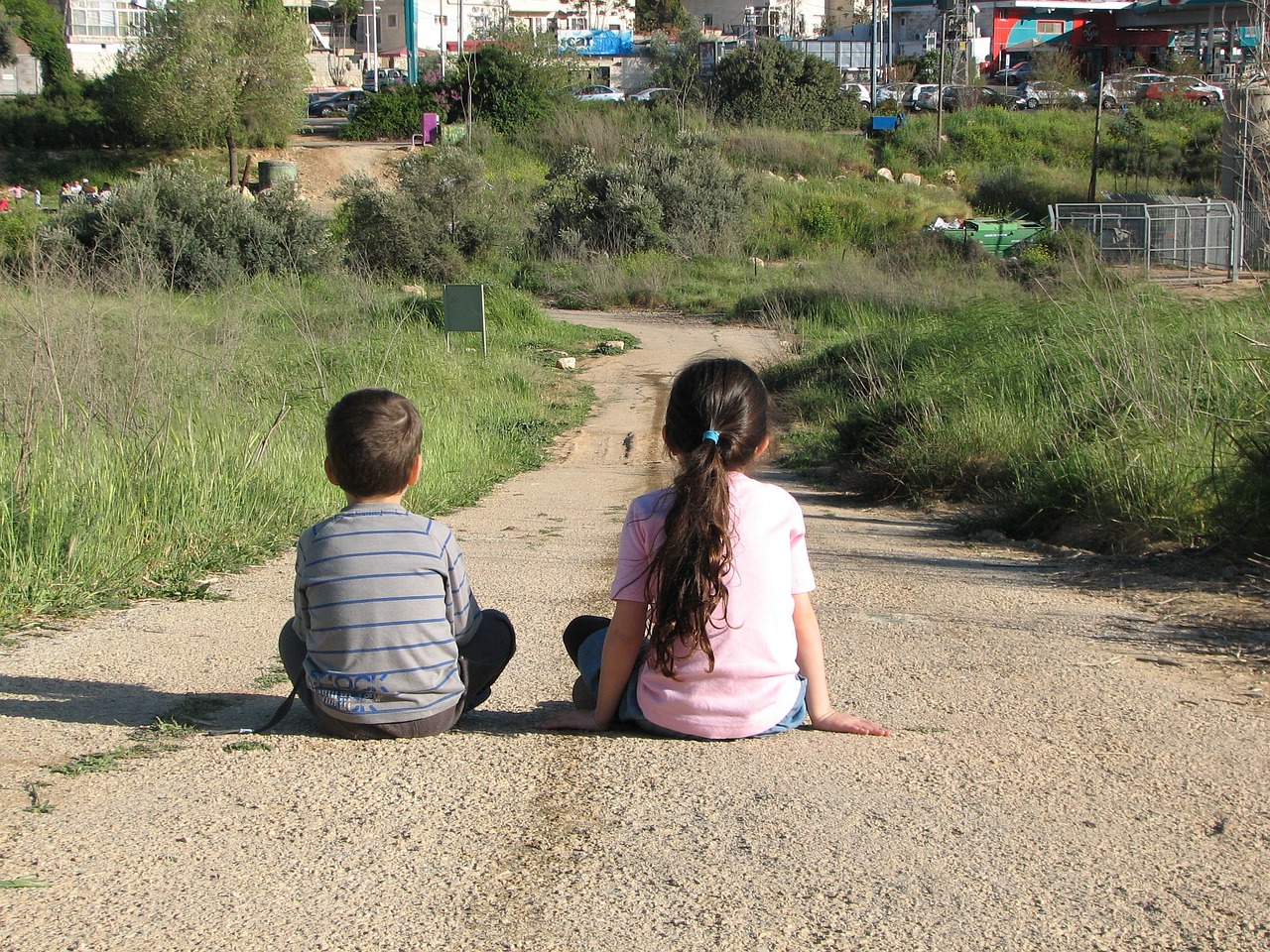Crafting with Kids: A Guide to Safe Tools and Materials
Crafting with kids is not just about creating beautiful projects; it’s a fantastic opportunity to foster creativity, enhance fine motor skills, and build lasting memories. However, it’s crucial to ensure that the crafting experience is both enjoyable and safe. In this guide, we will explore various tools and materials that are suitable for children, emphasizing the importance of safety, creativity, and fun. So, whether you're a parent, teacher, or caregiver, get ready to dive into the wonderful world of crafting with kids while keeping their safety at the forefront!
When it comes to crafting with kids, selecting the right tools is essential. Not all tools are created equal, especially when they are meant for little hands. First and foremost, consider the age of the children involved in the crafting activities. For younger kids, tools that are designed specifically for their age group, such as blunt scissors and washable markers, are ideal. These tools not only promote creativity but also minimize the risk of injury. Always look for features like rounded edges and non-toxic materials when choosing crafting instruments. It’s like picking the right gear for a game; the right tools can make all the difference!
Using non-toxic materials is crucial for children's safety. Imagine the peace of mind you’ll have knowing that the paints, glues, and papers your kids are using are safe for them! There are plenty of options available that are both fun and safe. For instance, look for art supplies that are labeled as non-toxic and free from harmful chemicals. These materials ensure that your kids can express their creativity without putting their health at risk. When you’re crafting with kids, it’s like opening a treasure chest of possibilities, and ensuring the materials are safe is key to unlocking that treasure!
Paper and cardstock are among the most versatile materials perfect for kids' crafts. From colorful construction paper to textured cardstock, the options are endless! Kids can create greeting cards, paper animals, or even intricate collages. The beauty of paper crafting is that it allows children to explore their imagination freely. You can even introduce them to different types of paper, such as recycled paper or handmade paper, which can add a unique touch to their projects. Think of it as providing them with a blank canvas where their ideas can come to life!
Recycling everyday items for crafts is not only eco-friendly but also a fun way to engage kids in creative projects. Encourage children to collect items like cardboard boxes, plastic bottles, and old magazines. These items can be transformed into incredible works of art! For example, a simple cardboard box can become a spaceship, while an old magazine can be cut up for a colorful collage. This practice not only sparks creativity but also teaches kids the importance of reusing materials. It’s like turning trash into treasure, and kids love being part of that transformation!
Incorporating natural materials like leaves, stones, and twigs into crafting projects can enhance children's experiences. These items can be collected during nature walks, providing a wonderful opportunity to connect with the environment. Kids can use leaves to create beautiful prints, stones for painting, or twigs to build miniature structures. The tactile experience of working with natural materials can be incredibly enriching and helps children appreciate the beauty of nature. It’s like bringing the great outdoors into your crafting space!
Choosing safe adhesives and paints is vital for children's health. Look for options that are labeled as non-toxic and washable. Crafting with glue and paint can be messy, but it’s all part of the fun! Ensure that the products you choose are suitable for the age group you are working with. For younger kids, consider using glue sticks or liquid glue with easy cleanup. When it comes to paints, washable varieties are a must to avoid any permanent stains on clothes or furniture. Think of it as creating a masterpiece without the worry of a messy aftermath!
Creating a safe crafting environment is essential for kids. A well-organized workspace not only promotes safety but also enhances creativity. Start by designating a specific area for crafting, free from distractions and hazards. Ensure that all tools and materials are easily accessible yet stored safely out of reach when not in use. Consider using tables with rounded edges and providing protective coverings for surfaces to catch spills and messes. A little preparation goes a long way in ensuring a fun and safe crafting experience!
An organized workspace promotes safety and efficiency. Use bins, baskets, or drawers to sort tools and materials by type. For example, keep all paints in one container and all papers in another. This not only helps kids find what they need quickly but also teaches them the importance of tidiness. Imagine a crafting area where everything is in its place, allowing creativity to flow without interruptions. It’s like having a well-stocked kitchen where every ingredient is at your fingertips!
Supervision is key to safe crafting. While kids love to explore and experiment, having an adult nearby to guide them is essential. This ensures that they are using tools and materials safely and helps them learn proper techniques. Encourage kids to ask questions and express their ideas while you provide support and encouragement. Think of yourself as their crafting coach, cheering them on as they navigate their creative journey. Together, you can create a crafting experience that is both safe and unforgettable!
- What age is appropriate for crafting with kids? Generally, children as young as 3 can start with simple crafts, while older kids can handle more complex projects.
- How can I ensure the materials are safe? Always look for products labeled as non-toxic and age-appropriate. Check for safety certifications when available.
- What should I do if my child ingests a craft material? Contact a healthcare professional immediately for guidance and assistance.

Choosing Safe Tools
When it comes to crafting with kids, the selection of safe tools is crucial. You want to ignite their creativity without putting them at risk. It’s essential to consider their age and skill level while choosing tools that are not only user-friendly but also designed with safety in mind. For instance, younger children may benefit from tools that have rounded edges, while older kids can handle slightly more complex instruments. But what exactly should you look for when picking out these tools?
First and foremost, always opt for tools that are specifically labeled as child-safe. These often include features like ergonomic grips, safety locks, and materials that are less likely to cause injury. Here are a few examples of safe tools you might consider:
- Safety Scissors: These have rounded tips and are designed to cut paper without posing a risk to little fingers.
- Child-Friendly Paintbrushes: Look for brushes with soft bristles and sturdy handles that are easy for kids to grip.
- Non-Toxic Glue Sticks: These are easy to use and mess-free, making them perfect for young crafters.
Moreover, it's wise to introduce tools gradually. Start with basic items and as your child gains confidence and skill, you can introduce more advanced tools. This approach not only keeps them safe but also allows them to build their crafting skills over time. Think of it as teaching a child to ride a bike; you wouldn’t start them off on a mountain trail, right? You’d begin with training wheels on a flat surface, ensuring they get comfortable before venturing out into the world.
Another important aspect is supervision. Always keep an eye on your little creators as they use tools. Even the safest tools can lead to accidents if not handled properly. By being present, you can provide guidance and intervene if necessary, ensuring that the crafting experience remains both fun and secure. Remember, crafting should be an enjoyable bonding experience, not a stressful one!
In summary, choosing safe tools for crafting with kids involves selecting age-appropriate, child-safe options, introducing tools gradually, and maintaining supervision. With the right tools in hand, you can create a nurturing environment that encourages creativity while prioritizing safety. So, get ready to unleash your child’s imagination with the right tools at your disposal!

Non-Toxic Materials
When it comes to crafting with kids, one of the most important considerations is the materials you choose. You want to unleash their creativity without compromising their safety. That's where come into play! These materials are designed to be safe for children, ensuring that they can express their artistic flair without any harmful effects. Imagine a world where your little ones can paint, glue, and create to their heart's content without you worrying about what’s in the products they’re using. Sounds great, right?
So, what exactly qualifies as non-toxic? Generally, these materials are free from harmful chemicals that can pose health risks. When shopping for crafting supplies, look for labels that indicate the products are non-toxic, water-based, or child-safe. This is especially important for items like paints, glues, and markers. It’s like choosing a safe playground for your kids; you want them to have fun, but you also want to make sure they’re protected!
Here’s a breakdown of some fantastic non-toxic materials that you can incorporate into your crafting sessions:
- Watercolor Paints: These are not only vibrant and fun but also easy to clean up. Plus, they’re typically made with non-toxic ingredients.
- Child-Safe Markers: Look for markers that are labeled as non-toxic. Many brands offer washable options that are perfect for little hands.
- Natural Glue: There are many non-toxic adhesives available that are made from natural ingredients, ensuring a safe crafting experience.
- Biodegradable Glitter: If your kids love a little sparkle, opt for biodegradable glitter that’s safe for both them and the environment.
Using non-toxic materials not only keeps your kids safe but also allows for a more enjoyable crafting experience. Imagine the joy on their faces as they dive into a project with paints that are vibrant yet safe. It's like giving them the freedom to explore their creativity without the heavy weight of worry hanging over you!
Additionally, many of these materials are eco-friendly, which means you’re not just protecting your children but also the planet. By choosing non-toxic and sustainable materials, you’re teaching your kids valuable lessons about responsibility and care for the environment. It’s a win-win situation!
Now, let’s not forget about the importance of checking the labels. Always read the packaging to ensure that the materials are certified non-toxic. Some brands may use terms that sound safe but could still contain harmful substances. When in doubt, do a bit of research or look for trusted brands that specialize in children’s crafting supplies.
In conclusion, selecting non-toxic materials is a crucial step in ensuring a safe and enjoyable crafting experience for kids. By choosing wisely, you can create a fun environment that fosters creativity and imagination while keeping their health in check. So, gather those non-toxic supplies and get ready for a crafting adventure that’s as safe as it is exciting!
Q: What are some signs that a crafting material is non-toxic?
A: Look for labels such as "non-toxic," "water-based," or "child-safe." Certifications from organizations like ASTM or AP are also good indicators.
Q: Are all art supplies for kids non-toxic?
A: No, not all art supplies are created equal. Always check the packaging and choose products specifically labeled as non-toxic.
Q: Can I make my own non-toxic crafting materials?
A: Absolutely! Many parents make their own paints and glues using household ingredients like flour, water, and natural dyes.
Q: Why is non-toxic crafting important?
A: Non-toxic crafting materials ensure that children are safe while they express their creativity, reducing the risk of exposure to harmful chemicals.

Paper and Cardstock
When it comes to crafting with kids, are like the trusty sidekicks of creativity. These materials are not only versatile but also incredibly easy to work with, making them ideal for young artists eager to express themselves. Think of paper as a blank canvas, waiting for the splash of imagination that children bring to their projects. From simple drawings to elaborate collages, the possibilities are endless!
There are several types of paper and cardstock that cater to different crafting needs. For instance, regular printer paper is great for quick sketches and simple crafts, while construction paper adds a burst of color and is perfect for cut-out projects. If you're looking to create something a bit sturdier, cardstock is your best friend. It provides a solid base for cards, scrapbooking, and even 3D models. The thickness of cardstock makes it less likely to tear, which means kids can dive into their projects without worrying about ruining their hard work.
Now, let's talk about the fun part: creative uses for these materials! Here are some exciting ideas:
- Collages: Gather various types of paper and let kids create stunning collages that reflect their personality.
- Origami: Use origami paper to introduce children to this ancient art form, teaching them patience and precision.
- Greeting Cards: Encourage kids to make personalized cards for family and friends, adding a special touch to any occasion.
Don't forget about the environment! Using recycled paper can be a fantastic way to teach kids about sustainability while crafting. It’s like giving new life to old materials, and it sparks discussions about the importance of taking care of our planet. You can turn scrap paper into beautiful art or even use it for practice sketches. The best part? It’s guilt-free crafting!
As you set up your crafting station, remember to keep a variety of paper types on hand. This not only keeps things interesting but also allows kids to experiment with textures, colors, and techniques. Whether they’re tearing, cutting, or gluing, the tactile experience of working with different papers enhances their creativity and fine motor skills. Just imagine the joy on their faces as they watch their ideas come to life!
So, when you think about crafting with kids, don’t overlook the incredible world of paper and cardstock. With a little guidance and a lot of encouragement, you can help them turn these simple materials into masterpieces. Just like a magician with a wand, they can create magic with just a few sheets of paper!
Q: What types of paper are best for kids' crafts?
A: The best types of paper for kids include construction paper, printer paper, cardstock, and recycled paper. Each type offers different textures and colors, making crafting more fun!
Q: Are there any safety concerns with using paper and cardstock?
A: Generally, paper and cardstock are safe for kids. However, ensure that scissors and other cutting tools are age-appropriate and that adult supervision is provided during crafting activities.
Q: Can I use old newspapers or magazines for crafting?
A: Absolutely! Old newspapers and magazines are great for collages and mixed media projects. Just make sure to supervise younger children to avoid any paper cuts.

Recycled Materials
Recycling everyday items for crafts is not just a fun activity, but it also teaches kids the importance of sustainability and creativity. Imagine transforming an old cereal box into a colorful puppet theater or using plastic bottle caps to create vibrant mosaics! The possibilities are endless when you start looking at common household items through a crafty lens.
One of the best things about using recycled materials is that they are often free and readily available. Before tossing out items, ask yourself: "Can this be used for a craft project?" You’d be surprised at how many things can be repurposed! Here are some common materials that can spark creativity:
- Cardboard Boxes: Great for building structures, vehicles, or even dioramas.
- Plastic Containers: Perfect for organizing supplies or turning into planters.
- Old Magazines and Newspapers: Ideal for collages, paper mache, or scrapbooking.
- Egg Cartons: Fantastic for creating creatures or organizing small items.
When crafting with recycled materials, it’s essential to guide kids on how to use them safely. For instance, if you're using scissors to cut cardboard, make sure children understand the importance of cutting away from their bodies and using the tools properly. This not only ensures safety but also helps them develop valuable skills that they can use in future projects.
Moreover, incorporating recycled materials into crafting can lead to meaningful discussions about waste and the environment. You can explain to your kids how reusing items reduces landfill waste and conserves resources. This approach not only enhances their crafting experience but also instills a sense of responsibility towards the planet. So, the next time you’re about to throw something away, pause for a moment and consider how it could become a masterpiece in your child’s hands!

Natural Materials
When it comes to crafting with kids, can be a treasure trove of inspiration and creativity. Think about it—what could be more exciting than stepping outside and gathering leaves, stones, and twigs to create something unique? These materials not only encourage children to explore their environment but also help them connect with nature in a hands-on way. Imagine your little ones transforming ordinary items into extraordinary works of art! It’s like turning the mundane into the magical, and the best part is that these materials are typically safe and abundant.
One of the most delightful aspects of using natural materials is the variety they offer. For instance, leaves can be used for printing, collages, or even as stencils. Children can dip them in paint and press them onto paper to create beautiful patterns that mimic the beauty of nature. Similarly, twigs can be shaped into frames or used as the base for sculptures, allowing kids to unleash their imagination while developing fine motor skills.
Stones, on the other hand, are incredibly versatile. They can be painted to create fun characters or animals, or even used in games and educational activities. The tactile experience of handling stones can also be very grounding for children, providing a sensory element that enhances their crafting experience. By incorporating natural materials, you’re not just fostering creativity; you’re also encouraging kids to think outside the box and appreciate the beauty of the world around them.
However, while natural materials are fantastic, it’s essential to ensure that they are safe for children to use. Always supervise your kids when they’re gathering materials from outside, and teach them to avoid anything that looks harmful or has sharp edges. Additionally, make sure to wash any materials thoroughly before use to remove dirt or potential allergens. This way, you can ensure that their crafting experience is not only fun but also safe.
Incorporating natural materials into your crafting sessions can also lead to discussions about the environment and sustainability. For example, you can talk about how using items from nature can reduce waste and why it’s important to respect our surroundings. This not only enriches the crafting experience but also instills valuable life lessons in your children.
So, next time you're planning a crafting day, consider heading outdoors first. Gather some natural treasures and let your kids’ creativity run wild. Who knows? You might just inspire a lifelong love for crafting and nature!
Q: What are some safe natural materials for kids to use in crafts?
A: Safe natural materials include leaves, twigs, stones, pine cones, and flowers. Always supervise children to ensure they avoid anything sharp or harmful.
Q: How can I incorporate natural materials into educational activities?
A: You can use natural materials for counting games, sorting activities, or even art projects that teach about colors and textures found in nature.
Q: Are there any precautions I should take when using natural materials?
A: Yes! Always wash materials before use to remove dirt or allergens. Supervise children closely to ensure they handle materials safely and avoid anything that could cause injury.

Adhesives and Paints
When it comes to crafting with kids, choosing the right adhesives and paints is crucial for ensuring a safe and enjoyable experience. Kids are naturally curious and creative, and they often want to dive headfirst into their projects. However, as a responsible adult, it’s essential to guide them in selecting materials that won’t pose any health risks. So, what should you look for when picking out these supplies?
First off, you want to steer clear of any products that contain harmful chemicals. Many traditional adhesives and paints can emit toxic fumes or contain substances that are not safe for children. Instead, look for non-toxic options that are specifically labeled as safe for kids. These products are often water-based, making them easier to clean up and less likely to cause irritation. Brands that prioritize safety usually provide clear labeling, so keep an eye out for certifications or seals that indicate a product is child-friendly.
Here’s a quick overview of some safe adhesives and paints you can consider:
| Type | Examples | Safety Features |
|---|---|---|
| Adhesives | Glue sticks, white school glue, craft glue | Non-toxic, washable, low odor |
| Paints | Watercolor paints, acrylic paints (non-toxic), finger paints | Non-toxic, easy to clean, vibrant colors |
Using these types of adhesives and paints allows kids to express their creativity without the worry of exposure to harmful substances. Not only do they get to create beautiful projects, but they also learn the importance of choosing safe materials. For instance, while working with glue, kids can explore different techniques like layering or collaging, which can enhance their fine motor skills. Similarly, painting with non-toxic options opens up a world of color exploration and artistic expression.
It’s also essential to teach children about the proper way to use these materials. For example, explain the importance of applying adhesives in a well-ventilated area, even if they are non-toxic. This not only reinforces safety but also instills a sense of responsibility in young crafters. Encourage them to read labels and understand what they are using, making crafting a learning experience in more ways than one.
In conclusion, when it comes to adhesives and paints, opting for non-toxic, kid-friendly products is a must. By prioritizing safety, you’re not only ensuring a fun crafting session but also fostering a love for creativity that kids can carry with them throughout their lives. So gather those supplies, set the stage for creativity, and watch as your little ones transform simple materials into extraordinary masterpieces!
- What are the best non-toxic adhesives for kids?
Some of the best options include glue sticks, white school glue, and washable craft glue. - Are water-based paints safe for children?
Yes, water-based paints, especially those labeled as non-toxic, are safe for kids and easy to clean up. - How can I teach my child to use adhesives and paints safely?
Explain the importance of reading labels, using materials in a ventilated area, and supervising their use to ensure a safe crafting environment.

Setting Up a Safe Workspace
When it comes to crafting with kids, creating a safe workspace is absolutely vital. Imagine a place where creativity flows like a river, but without the risk of getting swept away by hazards. The first step in achieving this is to choose a suitable area. Look for a spot that is spacious enough for the kids to move around freely, away from any potential dangers like sharp edges or fragile items. A well-lit area is also crucial, as it helps kids see what they are doing, reducing the chances of accidents.
Next, consider the surface where the crafting will take place. A sturdy table is ideal, as it can withstand the hustle and bustle of enthusiastic little hands. Cover the table with a protective layer, like a plastic tablecloth or old newspapers, to catch any spills or messes. This way, cleanup becomes a breeze, and the kids can focus on their creativity rather than worrying about making a mess.
Organizing tools and materials is another key aspect of a safe workspace. When everything is in its place, it not only makes crafting easier but also minimizes the risk of accidents. Use containers or bins to store supplies, and label them clearly. This not only teaches kids about organization but also makes it easy for them to find what they need without rummaging through a chaotic pile. Consider using a
| Item | Storage Method |
|---|---|
| Scissors | In a labeled container, out of reach of younger children |
| Paints | In a plastic caddy with lids tightly secured |
| Glue | Stored upright in a drawer to prevent spills |
| Paper | Stacked neatly in a designated area |
Supervision is another critical element of a safe crafting environment. It’s not just about keeping an eye on the kids; it’s about being actively involved in their crafting journey. Encourage them to ask questions and explore their creativity while providing guidance on how to use tools correctly. Think of yourself as their crafting coach, cheering them on while ensuring they play it safe. This way, they can learn essential skills while feeling supported and inspired.
Lastly, always have a first-aid kit on hand. Accidents can happen, even in the safest of environments. Having basic supplies like band-aids, antiseptic wipes, and gauze readily available can make a world of difference. It’s like having a safety net that allows everyone to dive into crafting without fear. Remember, the goal is to create a nurturing atmosphere where kids can express themselves freely while knowing they are safe.
- What age is appropriate for kids to start crafting? Generally, children as young as 3 can enjoy simple crafts with supervision. As they grow, they can handle more complex projects.
- How can I encourage my child’s creativity in crafting? Provide a variety of materials and tools, and let them explore without strict guidelines. Sometimes, the best ideas come from free play!
- What should I do if my child wants to use tools that seem too advanced? Always assess their readiness and provide guidance. If necessary, wait until they are older or more skilled before introducing complex tools.

Organizing Tools and Materials
When it comes to crafting with kids, organization is key. Imagine trying to create a beautiful masterpiece but being surrounded by a chaotic mess of supplies. Not only does it hinder creativity, but it can also pose safety risks. To foster an environment where children can unleash their creativity without any hiccups, it’s essential to have a well-organized workspace. Start by designating a specific area for crafting, whether it’s a table in the kitchen or a corner of the living room. This space should be solely dedicated to crafting activities, making it special and inviting for the little artists.
Next, consider using storage solutions that are kid-friendly. Clear bins or labeled containers can be a great way to keep tools and materials sorted. For instance, you might have a bin for paints, another for brushes, and yet another for paper. This not only helps kids find what they need quickly but also teaches them about responsibility and cleanliness. You might even involve them in the organization process—let them choose the colors of the bins or decorate the labels!
Another important aspect of organization is ensuring that tools are stored safely and accessibly. For younger kids, keep sharp objects like scissors in a high place, while providing age-appropriate tools within their reach. A tool caddy can be a fantastic addition, allowing kids to easily transport their supplies from one area to another. This way, they can feel empowered and independent, which is crucial for their development.
Moreover, consider creating a visual reference for the kids. You can make a simple chart that shows where each item belongs. For example, if you have a box for markers, you could draw a picture of a marker next to the box. This visual cue can help younger children learn to put things back in their designated spots, making cleanup a breeze. It’s like turning organization into a fun game!
Finally, remember that organization is not a one-time task; it’s an ongoing process. Take a few minutes at the end of each crafting session to tidy up. Encourage kids to help out, turning cleanup time into a fun bonding experience. By instilling these habits early on, you’re not just creating a safe and organized workspace; you’re also teaching valuable life skills that they will carry with them as they grow.
Q1: What are the best tools for young children?
A1: For young children, consider using safety scissors, large crayons, and non-toxic glue sticks. These tools are designed with little hands in mind and are safer to use.
Q2: How can I ensure the materials are non-toxic?
A2: Always look for products labeled as non-toxic and safe for children. Certifications from organizations like ASTM or AP are good indicators of safety.
Q3: What should I do if my child wants to use a tool that seems unsafe?
A3: It’s important to assess the situation. If the tool is not age-appropriate, explain why it’s not safe and offer an alternative that they can use instead.
Q4: How can I make cleanup easier after crafting?
A4: Create a designated cleanup time at the end of each session and involve the kids. Use bins and containers to sort materials, making it easier for everyone to participate.

Supervision and Guidance
When it comes to crafting with kids, supervision and guidance aren't just helpful; they're essential! Picture this: a group of excited children, scissors in hand, surrounded by colorful materials. It’s a scene filled with potential creativity, but without proper oversight, it can quickly turn into a crafting disaster. As an adult, your role is not only to facilitate their artistic expression but also to ensure their safety. Think of yourself as the captain of a ship navigating through uncharted waters—your guidance keeps everyone on course and out of harm's way.
First and foremost, it’s crucial to choose the right moment to engage with your little crafters. Active supervision means being present and actively involved in their crafting experience. This doesn’t mean hovering over them like a helicopter parent; rather, it’s about striking a balance. You want to encourage independence while being ready to step in when necessary. For instance, if a child is using scissors, you should be within arm's reach, ready to assist if they struggle or if the scissors are being used incorrectly.
Moreover, it’s important to communicate openly with the kids about the tools and materials they are using. Explain the purpose of each item, and share safety tips in a fun way. For example, you could say, “These scissors are like magic wands; they can create beautiful things, but we must use them carefully to avoid any accidents!” This not only makes the information memorable but also instills a sense of responsibility in them.
In addition to direct supervision, consider setting up a crafting area where safety is prioritized. This could involve:
- Designating a specific table for crafts that is free from clutter.
- Ensuring all tools are age-appropriate and stored out of reach when not in use.
- Creating a clear set of rules for using each tool, such as “always cut away from your body.”
Lastly, remember that crafting should be a joyful experience! Celebrate their successes and encourage them to express their creativity. If they ask for help, be ready to guide them gently, reinforcing that mistakes are part of the learning process. Just as in life, crafting is about exploration and discovery. With your supervision and encouragement, kids can navigate these creative waters safely, resulting in not just beautiful crafts, but also cherished memories.
Q1: What age is appropriate for children to start crafting?
A1: Children can start crafting as early as age 2 with simple materials like paper and crayons. As they grow, you can introduce more complex tools and techniques tailored to their developmental stage.
Q2: How can I make crafting safer for my children?
A2: Always supervise children closely, choose age-appropriate tools, and use non-toxic materials. Setting clear rules for tool usage and maintaining an organized workspace can also enhance safety.
Q3: What types of materials should I avoid when crafting with kids?
A3: Avoid materials that are sharp, contain small parts that could be choking hazards, or are toxic. Always check labels for safety certifications and opt for non-toxic, washable options when possible.
Q4: How can I encourage creativity in my children while crafting?
A4: Provide a variety of materials and tools, encourage them to experiment, and refrain from imposing strict guidelines. Celebrate their unique creations and offer positive feedback to boost their confidence.
Frequently Asked Questions
- What are the safest tools for kids to use when crafting?
When crafting with kids, it's essential to choose tools that are age-appropriate. Look for items like rounded scissors, child-safe craft knives, and easy-to-handle glue sticks. These tools are designed to be safe for little hands, allowing kids to explore their creativity without the risk of injury. Always supervise their use to ensure safety!
- Are there non-toxic materials I should use for kids' crafts?
Absolutely! Non-toxic materials are crucial for keeping your little ones safe while they craft. Opt for supplies like water-based paints, non-toxic glues, and colored papers that are labeled as safe for children. Always check product labels and choose materials that are free from harmful chemicals to create a worry-free crafting experience.
- How can I create a safe workspace for crafting?
Setting up a safe workspace is all about organization and supervision. Make sure to clear the crafting area of any hazards and arrange tools and materials within easy reach. Use child-sized tables and chairs to ensure comfort. Always supervise your kids during crafting activities to guide them and keep them safe from potential dangers.
- What types of recycled materials can we use for crafts?
Recycled materials are a fantastic way to inspire creativity while being eco-friendly! You can use items like cardboard boxes, plastic bottles, egg cartons, and old magazines. These everyday items can be transformed into amazing craft projects, encouraging kids to think outside the box and use their imagination!
- Can natural materials be used in crafting?
Definitely! Incorporating natural materials like leaves, stones, and twigs can enhance the crafting experience. These items not only add texture and color but also connect kids with nature. Just make sure to wash any natural materials thoroughly before use to ensure they are clean and safe for your little crafters!
- What should I do if my child accidentally ingests a crafting material?
If your child accidentally ingests a crafting material, remain calm. Check the material's safety label and contact your local poison control center or seek medical advice immediately. It's always better to be safe than sorry, so keep emergency numbers handy while crafting!



















